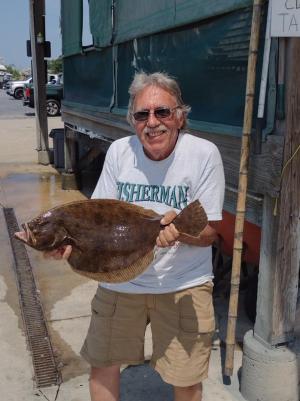I hope you didn’t stop reading when you saw Hudson Canyon because you don’t fish there. The fact that the National Oceanic and Atmospheric Administration is considering making that area a marine sanctuary should cause a chill to run down the spine of every fisherman on the East Coast.
While NOAA talks about both recreational and commercial fisheries as important activities in the Hudson Canyon, we have seen both curtailed or banned in other sanctuaries across the country. Several national fishing and boating originations have come out with news releases warning fishermen and boaters about this problem.
A few years ago, there was a movement to make the white marlin an endangered species. This would have caused a ban on all fishing in the canyons because that’s where white marlin live. Fortunately, cooler heads prevailed and that never happened.
In my many years of work for fisheries conservation, I have run across groups of people who consider fishermen and hunters nothing but barbarians. While I do have a few friends who might fit that description, most of us are reasonably civilized and can make our way in polite society.
What these groups may lack in size, they make up in money – lots of money. They are also politically savvy and know exactly where to put their money to do the best toward their objectives. Those objectives include locking up all the fish in the ocean. I actually had one of their stooges say at a meeting that if we had marine sanctuaries in the ocean, the public could view the fish through glass-bottom boats.
The important thing that those of us without money – or those who happen to have money but still fish and hunt – can do is submit a comment before Aug. 8.
Go to the Federal eRule Making Portal, www.regulations.gov. The docket number is NOAA-NOS-2022-0053. Click the Comment Now icon, complete the required fields, and enter or attach your comments. Explain how important recreational or commercial fishing is to you and your family. Tell the people at NOAA to be sure the language in the rule makes it ironclad that both of these activities remain a part of the allowed activities in the Hudson Canyon and any other location put under a marine sanctuary.
I will also send my comments to Sens. Carper and Coons and Rep. Blunt Rochester.
Summer visitors
We have had a couple of summer visitors this past week that are going to make the fishing more interesting.
Cobia have been caught by accident from the beach. One was taken on a top-bottom rig set out for kings, spot, croaker or whatever, but certainly not for cobia. The second hit a shark rig, and that is a little more reasonable. Cobia are not unheard of from the surf in North Carolina and even Virginia, but certainly not in Delaware. Perhaps we will see some folks set out to catch a cobia from the beach. I wish them luck.
The other summer visitor is the dolphin found inshore around the markers set out on the end of lines of sea bass pots. These are often referred to as buoys. Dolphin are often referred to as mahi-mahi. That’s so people don’t get confused and think they are eating the mammal dolphin in restaurants.
If you come up on a marker and see dolphin swimming around, toss out some small pieces of fish to get them feeding, then toss out some more. Only put a hook in a few of those pieces. You can usually put a few fish in the box before they get wise to the idea that not all those pieces of fish are free.
It is also possible there are larger fish in the neighborhood that have been feeding on the small dolphin. Try casting out a large swimming plug or jigging with something in the 6- to 8-inch range. You never know what you might find.
Fishing report
The hot weather has not been a friend to the surf fisherman. Still, a few kings and spot are around and the afore mentioned cobia, but generally, a slow pick from the beach.
The same is true at the Indian River Inlet. Both tog and sheepshead have been slow. The night bite of rockfish has also dropped off.
Chunking yellowfin tuna at the inshore lumps has been very productive. Up to 10 tuna a trip in the 40- to 60-pound range has anglers very happy.
The inshore flounder and sea bass bite is there, but it is less than stellar. Shorts dominate, keepers are rare.
The Delaware Bay reef sites hold croaker and spot plus a few flounder. The Outer Wall and, Ice Breakers give up sheepshead to sand fleas.
Note: Thanks to Karen Wall at Big Game Fishing Journal for the information on the Marine Sanctuary situation.






















































